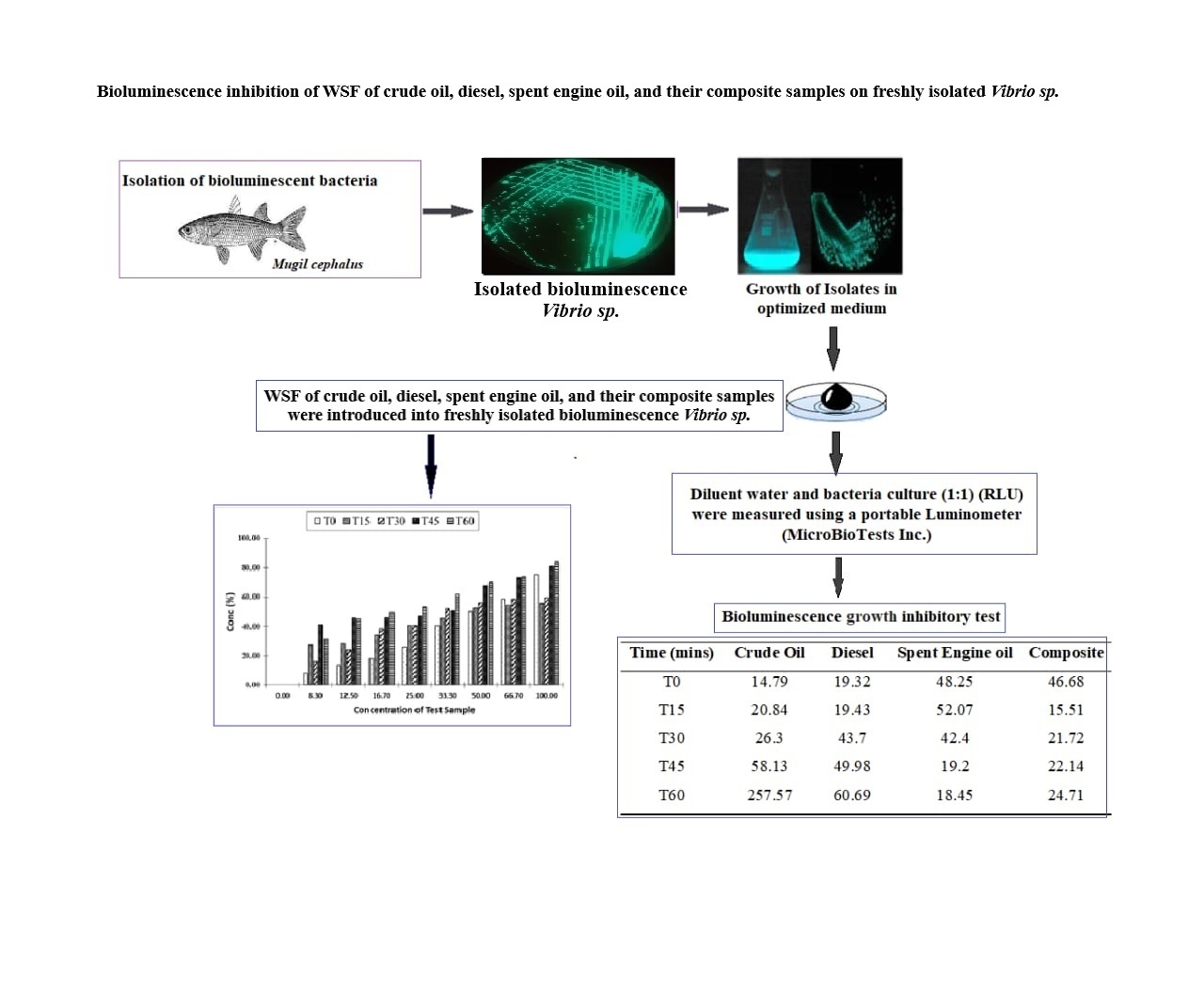Luminescence Inhibition of Water-soluble Fractions of Crude Oil, Diesel and Spent Engine Oil on Freshly Isolated Vibrio campbellii
Main Article Content
Abstract
Inhibitory effects of water-soluble fraction (WSF) of crude oil, diesel, spent engine oil, and their composite mixture on luminescent Vibrio species isolated from a tropical marine fish were assessed to determine the acute toxicity and suitability of the bacteria. This was evaluated with a slight modification of the procedure for freshly prepared luminescent marine bacteria according to the International Organization for Standardization. Toxicity was assessed following bacterial exposure to different concentrations of the WSFs. Water quality parameters and total polycyclic aromatic hydrocarbons (PAHs) were determined using standard methods. Chemical analysis revealed cumulative loads of PAHs in the WSFs of crude oil (7.22 mg L-1) > diesel (6.92 mg L-1) > composite (6.23 mg L-1) > spent engine oil (4.58 mg L-1). The WSFs of crude oil and diesel showed rapid inhibition of bacterial light yield (11–81%), with maximum inhibition at 100% treatment level. However, luminescence inhibition was evident at 45 mins following exposure to spent engine oil (41–80%) for most of the treatment level tested, even though the 100% treatment level showed rapid (T0) and elevated percent inhibition at 75%. Exposure to composite mixtures of the hydrocarbons (1:1:1) revealed a gradual rise in percent inhibition with time. The EC50 values noted for the entire test samples during the period of exposure (0–60 mins) were between 14.79 and 257.57 mg L-1. Results obtained from this study revealed low toxic impacts of the WSFs and the observed sensitivity of the freshly isolated bioluminescent bacteria from our tropical waters. More so, it further demonstrates the potential for application of the bioluminescent Vibrio campbellii in standardized toxicity testing. Vibrio campbellii can be utilized to assess toxicity outcome in the event of bioremediation of oil residues but equally as a simple and generic indicator of oil spill and consequences on coastal waterways.
Article Details

This work is licensed under a Creative Commons Attribution-NonCommercial 4.0 International License.
Published articles are under the copyright of the Applied Environmental Research effective when the article is accepted for publication thus granting Applied Environmental Research all rights for the work so that both parties may be protected from the consequences of unauthorized use. Partially or totally publication of an article elsewhere is possible only after the consent from the editors.

